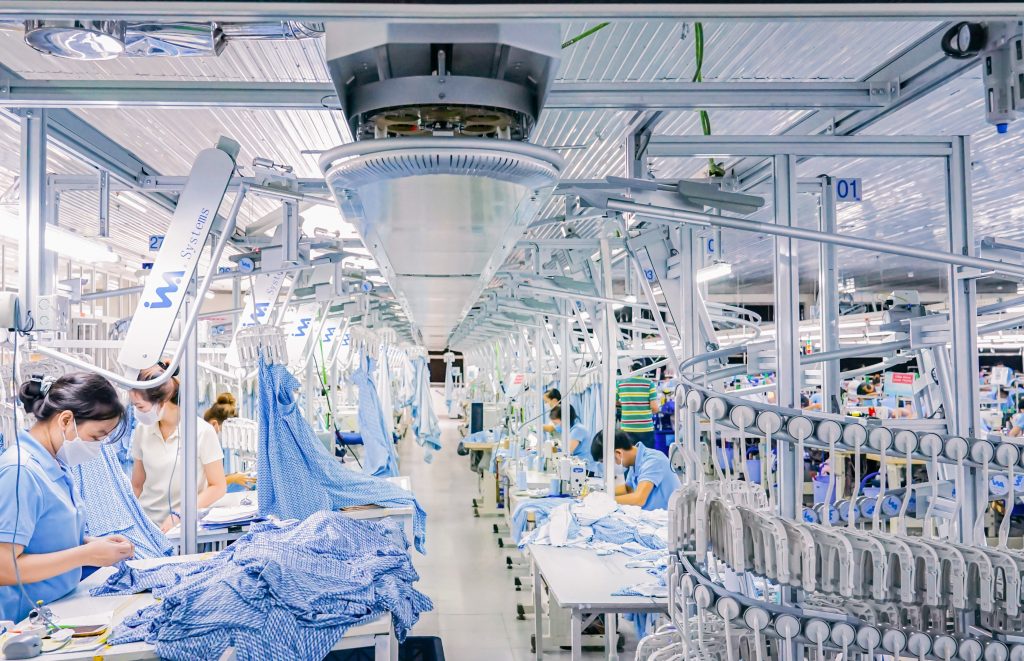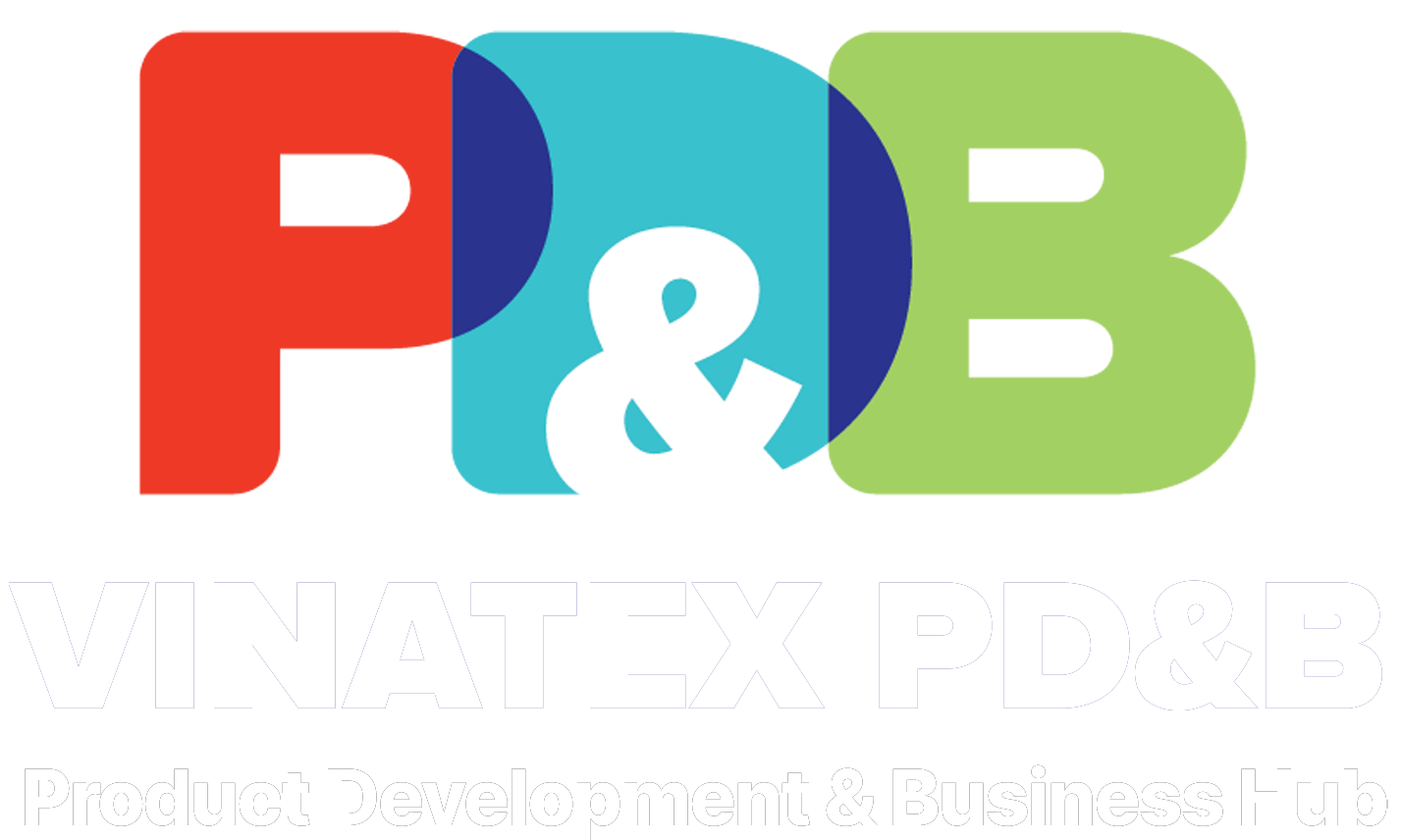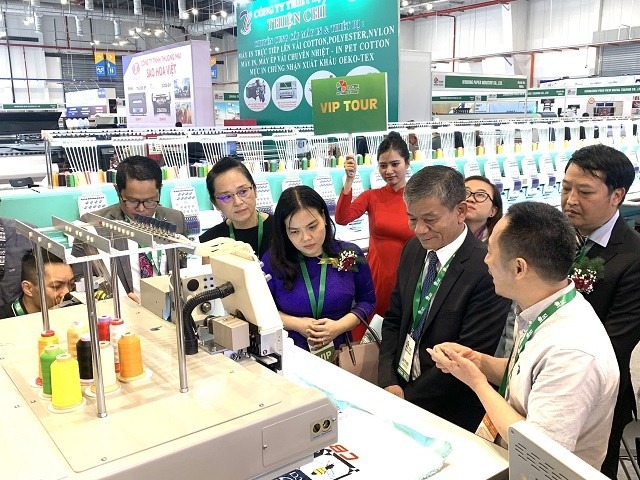25/07/2024
Engagement with Vinatex through Contribution-Understanding-Sharing of representatives of the group’s share at member units
The development process of the management of representatives of the capital of Vietnam National Textile and Garment Group (VINATEX) at enterprises.
Since 1999, when the first member unit of the Group was equitized, a new concept began to emerge within the title system: the representatives of the Group share at these joint stock units. In the early days, there was no clear memory or systematic management for these representatives. Even within the Enterprise Law, the section concerning joint stock companies was not fully developed. Generally, in over 10 years from 1999 to 2008, the title of “representative of the Group’s share” was overshadowed by titles such as Chairman and CEO that those representatives held within the enterprises.
Together with the improvement of the legal framework for enterprises, e.g., the 2005 Enterprise Law, especially after the enactment of the 2014 Enterprise Law, provisions for joint stock companies have been more detailed and specific. Addressing challenges in corporate governance, such as the adoption and implementation of shareholders’ viewpoints and objectives in Vinatex Group’s joint-stock companies, poses a requirement to institutionalize the representatives’ compliance with corporate laws and other legal regulations. This process marks a shift from directives issued by the Group to its wholly-owned units concerning critical matters such as production strategies, business operations, investments, and personnel decisions, towards decision-making influenced by ownership ratios at AGM and stakeholder engagement in matters under the authority of the Board of Directors.

It is the first time raising questions such as:
Can members of the Group’s representative team have different opinions during Board of Directors meetings?
Can they give different votes?
What are the contents that Group’s share representatives are allowed to proactively vote in the Board of Directors and at the Annual General Meeting of Shareholders and what are the contents that they must consult with Vinatex before voting?
If consulting Vinatex before voting, how do they do and how long does it take to answer?
If not receive an answer from Vinatex before the meeting of the Board of Directors or AGM, how will the representatives act?
How is the quality of answers from the Group’s holding company? Is there an understanding of and sharing with representatives at member companies?
There were some valuable lessons when the Group’s representatives gave different votes at the AGM of member units.
In 2007, the Group issued a regulation on management representatives, updating the contents of representative monitoring to ensure compliance with the 2005 Enterprise Law. The Group began conducting annual assessments of capital representatives at member companies, mainly based on the company’s financial results and other qualitative factors such as brand development, domestic business, and compliance with regulations. In 2009, the Group organized a conference for all capital representatives for the first time, with management letters and ratings sent separately to each group of representatives at the company. This was a significant effort by the Holding Company to gain insights from the member enterprises, providing a more objective and transparent assessment of the contributions of the representatives. The goal was to obtain management letters that recommend key areas for improvement, enhancement, or innovation in the enterprises in the coming years.
From 2009 to 2015, all member companies were joint-stock companies, with the proportion of controlling companies gradually decreasing, while the Holding company remained a 100% state-owned enterprise. The management of representatives saw significant improvements in awareness. The Board of Members for the 2010-2015 term established the principle that the primary entities that the Holding company should serve are its representatives at member companies, with criteria emphasizing the rule of law, clear internal regulations, and convenient directives. This aimed to enable representatives to utilize the enterprise’s capabilities and the management system fully.
To implement the Board of Members’ perspective, the Group’s Executive Board issued specific templates for seeking opinions, particularly committing to timelines for responding to representatives by each content also discussing with representatives on issues that need to be asked early so the Holding Company have time to report to competent authorities. Additionally, some experienced staff from different departments were appointed to concurrently hold positions on the Board of Directors and the Supervisory Board at key units to better grasp specific enterprise requirements.
More quantitative criteria were developed for evaluating representatives, moving beyond solely focusing on final financial results. Instead, the evaluation process incorporated continuous improvement monitoring to promptly recognize the efforts of enterprises and provide more useful recommendations in management letters.
From 2015 to 2023, the Parent company transformed into a joint-stock company model, with over 53% state ownership, 14% foreign shareholders, and other shareholders are domestic legal entities and individuals. The relationship between the Group and its representatives continued to innovate, fostering better coordination and implementing two-way evaluations between the Group and the representatives, and vice versa.
The principle that representatives are the entities to be served by the Holding company was clarified and made measurable. The criteria for evaluating representatives continued to be refined, and divided for normally operating enterprises, enterprises in need of restructuring, and enterprises planning to divest. The new design took more account of the practical conditions of the enterprises to provide increasingly accurate evaluations and recommendations. Since 2017, the evaluation system has applied the Z-score index, an internationally standardized and more comprehensive system for assessing the financial health of enterprises. From 2018, the Group trained and implemented internal control and risk management activities at its member units.
Since 2015, in October every year, the Group has organized working groups to visit each enterprise to discuss the development of business plans and the key tasks that the Group expects the representatives to implement for the following year. This initiative also serves as an input basis for openly and equitably assessing the representatives’ task completion levels, ensuring a two-way exchange.
Despite the market fluctuations, the pandemics, and geopolitical conflicts creating an unprecedented business landscape for the textile garment industry, goals and solutions were required to continuously adjust. From 2019 onwards, the Group added meetings with representatives in March and April, primarily focused on reviewing the contents to be presented at the AGM, providing an opportunity to adjust the plans and solutions set in October of the previous year. In addition, the Group continued to conduct the annual evaluation and ranking of representatives in July and August after the AGM, using a scoring system that was regularly updated to reflect the changing circumstances.

New points in representative management in 2024
The year 2023 has been particularly challenging for Vietnam’s textile and garment industry. For the first time in 30 years, export turnover decreased by 11%, companies faced a shortage of orders, the yarn production sector sold below cost, capital flow dried up, and efficiency declined by 70% compared to 2022 and 85% compared to 2021. In this context, the entire system of the Group, with the solidarity, dedication, and creativity of the representatives at the enterprises, remained steadfast through the storm, fulfilling all targets assigned by the 2023 AGM. The contributions of the key enterprises were extremely important, playing a crucial role in the Group’s overall results.
At the enterprise level, the Group’s representatives all held top positions such as Chairman, and General Director, even though their capital shares might no longer be dominant. They spared no effort and employed every possible solution to steer their enterprises to the finished business plan, safeguarding the workforce, market, and capital of shareholders. The innovations at the enterprises were remarkably diverse, novel, and constantly evolving with each passing period.
To accurately grasp and fully appreciate the efforts of the representatives, for the first time in 15 years, instead of solely evaluating representatives based on business figures and regulatory compliance, the Group this year organized 3 working delegations led by the Chairman, General Director, and Permanent Deputy General Director of the Group. These delegations directly visited 19 units accounting for over 90% of the Group’s investment capital to discuss, listen to, and closely observe the representatives’ activities in 2023 regarding general governance, market, production, finance, and human resources. This served as an opportunity for the representatives to present specific details of their activities at the enterprises, their successes, and their challenges and setbacks.
However, the greatest benefit of this working session was not for the representatives but for the Group’s leadership, especially the functional department leaders.
Through practices at member companies, the functional departments gained many new insights such as:
– There cannot be a uniform organizational and management model across all units;
– It is impossible to apply the same competency framework to enterprises even though they produce the same products, but must be consistent with the unique characteristics of each one.;
– Personnel planning cannot adhere to regulations if there is a shortage of basic human resources for future development;
– There is no one-size-fits-all solution for enterprises, and it is impossible to replicate a successful model from one enterprise to another fully.;
– What exactly is an ERP system, and what is the appropriate level of implementation for the scale and potential of each enterprise?
It can be said that this was the most methodical, in-depth, and practical training session ever for the functional department leaders, most of whom lacked “real-world” experience. Understanding each enterprise more deeply is the basis for the departments to propose and advise the Group’s leadership feasibly and reasonably. Improving the level of satisfaction of representatives with the services provided by the Group. This learning session also served as a fundamental measure to combat bureaucracy, mechanicalness, formalism, and misconceptions about the capabilities of the parent company’s functional departments that had sometimes existed in the past in the direction and evaluation of enterprises and representatives, and to enhance the spirit of openness to learning of the parent company
Future Directions for Representative Management
Our ancestors taught us that “out of sight, out of mind.” The only way to enhance the quality of representatives of the Group, as well as to ensure the fulfillment of the representatives’ duties to Vinatex shareholders, is through continuous, flexible, and meaningful exchanges and meetings that bring specific value to both parties. With this approach, since 2020, the Group has organized monthly online seminars providing information on markets, competitors, global inventories, business results of companies that are major customers, financial markets, exchange rates, and interest rates. These seminars are implemented for all representatives and enterprise managers, attracting 300-400 participants each time.
Since 2020, the Group has successfully developed a model for forecasting total textile demand based on macroeconomic data from target markets such as the US, EU, Japan, China, and South Korea. The twice-yearly forecasts have been relatively accurate, helping businesses to proactively develop their business plans. Delving deeper into industry-specific management to enhance the competitiveness of each enterprise, since 2021, the Group has organized two production and business committees for yarn and garment sectors, putting several KPIs for enterprises to measure and compare during monthly meetings, and providing advice and support to help weaker enterprises rise to the level of stronger ones based on fundamentals like production and cost. Thus, representatives and the Group can meet at least twice a month, significantly improving the understanding between the staff of the boards and the enterprises, replacing the previous practice of meeting three times a year at the mid-year, year-end, and capital representative conferences.
With this approach, in the coming period:
– The group will further strengthen specialized topics, supporting businesses in dealing with practical problems, specifically research programs on equipment and investment models in the yarn and garment sector;
– Researching on types and suppliers of imported spare parts and materials to ensure the effectiveness;
– Researching on green transformation;
– Researching the implementation of ERP and digital transformation;
– Researching the issuance and organization of competency testing for middle-management positions, standardization of required knowledge and skills to create data for training and coaching;
– Researching the R&D model and the shift of business methods to real FOB;
– Researching the financial market and capital mobilization solutions for listed companies.
Conclusion
Over the past nearly 20 years, although there have been times when the Group’s management of share representatives at enterprises has not been satisfactory or convenient and has not placed representatives at the center, the Group has always received strong support from many groups of representatives. Not only have they fulfilled their responsibilities at the enterprises they are entrusted with, but they have also participated in supporting many weak and new units in the Group. A typical example is the capital representative group at Phong Phu JSC, which has provided the Group with over 10 senior leaders at other enterprises and at the Group; the representative group at Nha Be Garment JSC has supported technology and market transfer in the suit sector for Garco 10, Hoa Tho, as well as mentoring them until they mature, sharing management staff, market, orders, and capital with Vinatex Investment and Development Joint Stock Company, Southern Textile Joint Stock Company, Vinatex Da Nang; the capital representative group at HUEGATEX has supported the sewing sector of Northern Textile Joint Stock Company and Hanosimex; the capital representative group at Vinatex Phu Hung Joint Stock Company has supported the Nam Dinh yarn branch and the yarn sector of Nam Dinh Textile Garment JSC; the capital representative group of Phong Phu Joint Stock Corporation at Phong Phu International Company has supported the dyeing and textile sector at 8-3 Garment Limited Liability Company; and many other examples.

The spirit of sacrifice and mutual support is the finest tradition that generations of textile workers have built and is excellently inherited through today’s enterprise representatives.
The Group’s leadership always remembers these noble gestures of the representatives and recognizes that not only financial values are important, but that the value of supporting each link in the system to become sustainable is the most valuable for the Group.
Of course, in addition to the shining examples of the representative groups, there are also effective activities that go beyond the framework of the representative management regulations. In the Group, there are still two types of representative groups: one is that, although they comply with the regulations, they do not aggressively implement solutions in business, allowing difficulties to accumulate, even chasing after formal achievements, which brings long-term risks that the entire system must bear; the other is that they can receive support from other units when they are in difficulty but are not willing to open their hearts to support other units when they are better off. Fighting against individualistic and parochial thinking is necessary to build a united and cohesive Group.
It is hoped that the model of existing good factors will be learned and widely spread among all representative groups, building the relationship between the Parent company and the Group’s capital representatives at enterprises on the pillars of:
TRANSPARENCY – UNDERSTANDING – SHARING – COMPASSION
These will be the new values that the current generation contributes to the cultural treasure of the Vietnam National Textile and Garment Group.
Article by Mr. Le Tien Truong
Party Secretary – Chairman of the Board of Directors of Vinatex
Share:











